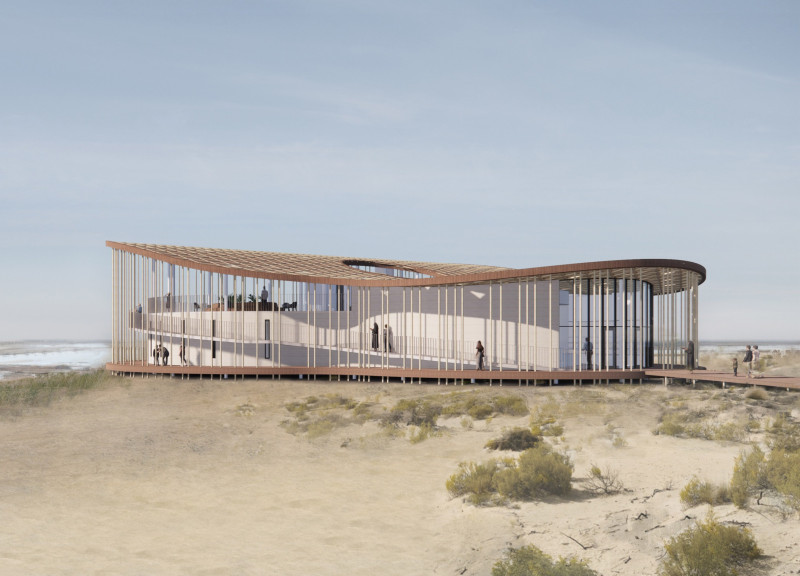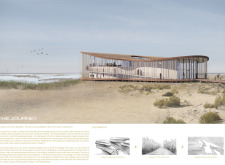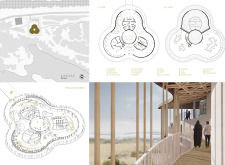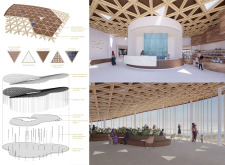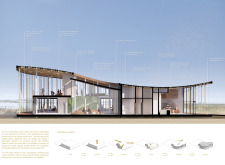5 key facts about this project
The design is set within a distinct natural environment, surrounded by eroded rock formations and wetlands. It serves as a space that promotes exploration and interaction with the outdoors. The design aims to connect visitors with nature, creating an experience that encourages engagement and reflection. Through thoughtful layout and sustainable practices, the building integrates indoor spaces with the landscape, fostering a sense of harmony between people and their surroundings.
Entrance and Layout
Visitors are greeted by a shaded passage at the entrance, creating a comfortable transition into the building. The interior is organized around three main areas that allow for flexibility and easy access. A central training space, which can be split into two classrooms, accommodates varied educational purposes. This arrangement is complemented by an information area, an exhibition space, and a café, providing a diverse range of activities and encouraging interactions among users.
Sustainable Design Elements
The structure is elevated with a pile foundation supported by columns and trusses, reducing disruption to the natural site and preserving the existing ecosystem. This design approach shows commitment to sustainability. A lightweight bamboo roof structure enhances the connection between indoor and outdoor areas, while insulated panels improve energy efficiency by lowering cooling costs.
Materiality and Features
A biophilic wall plays a significant role in enhancing indoor air quality and cutting energy usage. Solar panels placed on the roof generate and store energy, reducing dependence on external electricity. The inclusion of a grey water filtration system permits water reuse in washrooms. Additionally, water features on the site help manage air temperature, creating a more comfortable microclimate for visitors.
The details reveal a strong interaction between the built environment and the natural setting. Carefully designed terraces offer unique viewpoints for reflection, allowing users to appreciate the wetlands and their serene beauty.


